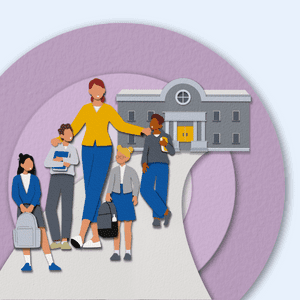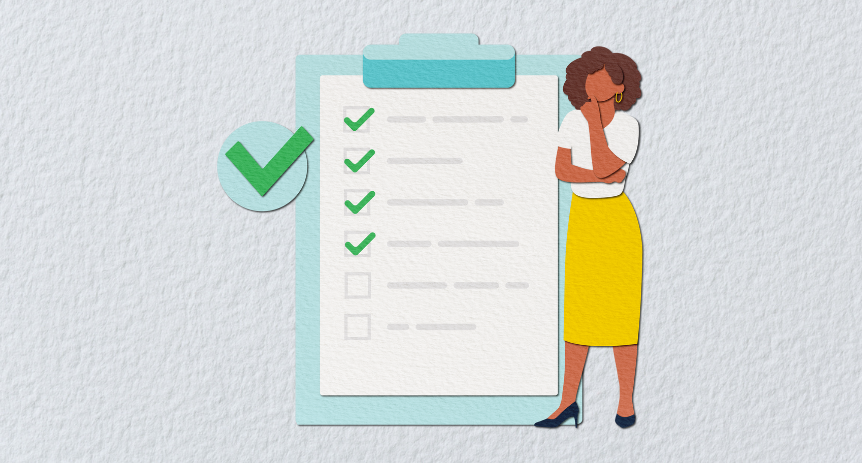In the world of education, the term “paraprofessional” (also known as “paraeducator”) may not be as widely recognized as teacher or principal. However, there are nearly 100,000 paraprofessionals in U.S. classrooms, and they play a crucial role in supporting educators and enhancing the learning experience for students.
If working in education or with young people sounds appealing, a job as a paraprofessional may be a great place to start.

What is a paraprofessional?
A paraprofessional, often referred to as a teacher’s aide or instructional assistant, is a crucial extension of the classroom teacher, providing additional support and assistance to ensure a smooth and effective learning environment. Although they are not certified teachers, paraprofessionals play an invaluable role in the educational process. They work closely with teachers to help manage the classroom, provide one-on-one support to students, assist with lesson planning, and sometimes handle administrative tasks.
Paraprofessionals often assist students with special needs, offering tailored support that certified teachers might not have the time to provide. This individualized attention can make a significant difference in a student’s educational experience, promoting better understanding and engagement with the material.
Despite their importance, paraprofessional roles are among the highest rates of vacancies in the education sector. This shortage underscores the growing demand for these vital educators. Over the past decade, the number of paraprofessionals in schools has increased by 25%, reflecting their growing necessity and the recognition of their contributions to the educational system.
The rising number of paraprofessionals indicates that schools are increasingly acknowledging the importance of additional classroom support. However, the high vacancy rates also highlight the need for more recruitment and retention efforts to ensure that classrooms have the support they need to thrive.
Paraprofessionals not only enhance the learning experience for students but also help alleviate some of the pressures on classroom teachers, enabling a more dynamic and supportive educational environment. Their role is essential in fostering an inclusive and effective educational experience for all students.
Roles and responsibilities of paraprofessionals
Paraprofessionals usually work alongside fully licensed teachers, but they also work independently on occasion. While the educational settings for paraprofessionals vary, here’s an overview of the kind of work they do on a regular basis:
Classroom support
One of the primary roles of a paraprofessional is to provide direct assistance to teachers and students within the classroom. They help create a positive and inclusive learning environment by working with students both individually and in small groups. This can involve reinforcing lessons, helping with assignments, and ensuring that students stay on task.
Special education assistance
Paraprofessionals are often assigned to work with students who have special needs. They play a crucial role in helping these students access the curriculum, providing support tailored to their individual needs. This can include modifying assignments, assisting with communication, and helping students develop social skills to ensure that students with diverse abilities can participate and succeed in the classroom.
Behavioral support
In some cases, paraprofessionals are tasked with managing and addressing challenging behaviors exhibited by students. They work closely with teachers and other professionals to implement behavior intervention plans, helping students learn appropriate behavior and cope with emotional challenges.
Classroom preparation
Paraprofessionals assist with the preparation and organization of classroom materials. They may help set up instructional materials, prepare visual aids, and ensure that technology and equipment are functioning correctly, all of which contribute to a smooth and effective learning environment.
Data collection and progress monitoring
Paraprofessionals often assist in collecting data on student progress and behavior. This information is critical for teachers and specialists to make informed decisions about instructional strategies and interventions.
Collaboration
Effective collaboration with teachers, other paraprofessionals, and support staff is a critical aspect of the role. Paraprofessionals work closely with educators to ensure that the needs of all students are met and that instruction is aligned with educational goals.
Getting started
The requirements for becoming a paraprofessional vary, but typically include the following:
- Have a high school diploma or equivalent: While not all school districts require their paraprofessionals to have an associate degree, all require a high school diploma or GED certificate. Earning a degree in relevant fields can be a huge advantage when it comes to starting in the classroom.
- Pass an assessment: If you don’t have a college degree, aspiring paraprofessionals may be required to pass a local assessment, such as the ParaPro Assessment or the ACT WorkKeys. Additional requirements may be necessary if you want to work with students with special needs.
- Earn certifications: Although paraprofessional certification is not required in every state, some districts require paraprofessionals to earn credentials in order to teach in public schools or have career growth.
As always, requirements vary by state, so be sure to research your state’s requirements before getting started.
In the realm of education, paraprofessionals are unsung heroes who provide invaluable support to both teachers and students. Flexibility, patience, and empathy are all necessary qualities for successful paraprofessionals. Their dedication to creating an inclusive and nurturing learning environment contributes significantly to the success of students of all abilities.







